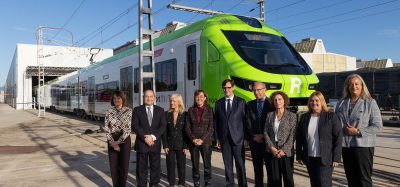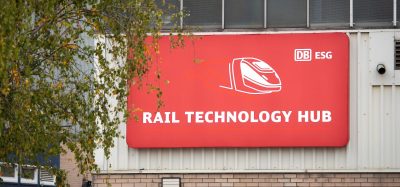The importance of adequate railway infrastructure financing – What does the rail sector need?
Posted: 20 September 2012 | | No comments yet
Mobility is vital for the European Union’s internal market, for society, and for the quality of people’s lives. Overall, transport infrastructure investments and maintenance have a positive impact on economic growth; they create wealth, jobs, and enhance the mobility of people. Infrastructure networks form the backbone of a modern competitive economy. In addition, Europe needs to reduce congestion, lower its emissions of greenhouse gases and local pollutants, and reduce its dependence on imported oil.
The challenges and requirements for all transport modes are enormous. The Europe 2020 targets ask for a 20% reduction of CO2 emissions, 20% increase in renewable energy and 20% increase in energy efficiency. Looking further out, the European Commission has set ambitious targets in the 2010 Transport White Paper, in particular for the rail sector: 30% of road freight over distances above 300km should shift to rail or inland waterways by 2030, and more than 50% by 2050; The length of the existing high-speed rail network should be tripled by 2030; A fully functional EU-wide multimodal TEN-T core network should be established by 2030; and all core network airports and seaports should be connected to the rail network by 2050.
Mobility is vital for the European Union’s internal market, for society, and for the quality of people’s lives. Overall, transport infrastructure investments and maintenance have a positive impact on economic growth; they create wealth, jobs, and enhance the mobility of people. Infrastructure networks form the backbone of a modern competitive economy. In addition, Europe needs to reduce congestion, lower its emissions of greenhouse gases and local pollutants, and reduce its dependence on imported oil. The challenges and requirements for all transport modes are enormous. The Europe 2020 targets ask for a 20% reduction of CO2 emissions, 20% increase in renewable energy and 20% increase in energy efficiency. Looking further out, the European Commission has set ambitious targets in the 2010 Transport White Paper, in particular for the rail sector: 30% of road freight over distances above 300km should shift to rail or inland waterways by 2030, and more than 50% by 2050; The length of the existing high-speed rail network should be tripled by 2030; A fully functional EU-wide multimodal TEN-T core network should be established by 2030; and all core network airports and seaports should be connected to the rail network by 2050.
Mobility is vital for the European Union’s internal market, for society, and for the quality of people’s lives. Overall, transport infrastructure investments and maintenance have a positive impact on economic growth; they create wealth, jobs, and enhance the mobility of people. Infrastructure networks form the backbone of a modern competitive economy. In addition, Europe needs to reduce congestion, lower its emissions of greenhouse gases and local pollutants, and reduce its dependence on imported oil.
The challenges and requirements for all transport modes are enormous. The Europe 2020 targets ask for a 20% reduction of CO2 emissions, 20% increase in renewable energy and 20% increase in energy efficiency. Looking further out, the European Commission has set ambitious targets in the 2010 Transport White Paper, in particular for the rail sector:
- 30% of road freight over distances above 300km should shift to rail or inland waterways by 2030, and more than 50% by 2050
- The length of the existing high-speed rail network should be tripled by 2030
- A fully functional EU-wide multimodal TEN-T core network should be established by 2030
- All core network airports and seaports should be connected to the rail network by 2050.
These ambitious goals for a competitive and resource-efficient transport system will require substantial investment. Significantly more than €1.5 trillion will be needed between 2010 and 2030.
To finance these requirements for the future of the rail transport system, the European Institutions, the Member States and the rail sector have to work together to find adequate solutions on the following issues:
- Ensuring adequate and reliable long-term funding
- Focusing funding on sustainable modes of transport
- Ensuring adequate funding through EU co-financing.
Two long-term trends work against these goals and need to be reversed. First, there has been a long-term decline in total transport infrastructure investment in Western Europe, from around 1.5% of GDP in 1975 to just 0.8% in 2008, a record low. In addition, too much focus has been placed on road infrastructure in a number of European countries, notably but not exclusively in Central and Eastern Europe.
In 2009, approximately €105 billion was invested in transport infrastructure in Europe. The data covers total gross investment (defined as new construction, extensions, reconstruction, renewal and major repair) in road, rail, inland waterways, maritime ports and airports, including all sources of financing. It also covers maintenance expenditures financed by public administrations.
Projecting the €105 billion annually over the period 2010-2030, and assuming that national investment patterns remain unchanged, this would represent at least €2.1 trillion – significantly more than the needs estimated in the Transport White Paper of €1.5 trillion. In order to modernise the current transport network by increasing interoperability and introducing intelligent transport systems, more, not less, financial resources will be needed.
Furthermore, the distribution of infrastructure investments between the modes (road, rail, inland waterways) varies greatly, although the road sector benefits most in each country.
The situation is even more dramatic in Central and Eastern Europe. While CEEC countries are increasing their spending on transport infrastructure, the rail sector is receiving increasingly less compared to other modes. In 1995, rail received 23% of total investment in transport infrastructure compared to only 13% in 2009. This underfinancing of rail infrastructure has had considerable consequences on the performance and the quality of rail services. It contributed to the decrease of the freight modal share that declined from 46% in 1995 to 22% in 2009 in CEEC and from 30% to 18% in Western Europe.
The economic crisis and resulting national budget deficits have exacerbated this situation in recent years. Poorly maintained infrastructure and deferred renewals and/or upgrades lead to speed restrictions and train delays, and ultimately to poor quality and punctuality for the customer.
Ensuring adequate and reliable funding through EU co-financing
The European Union is spending a total of €90 billion on transport infrastructure under the current financial perspective 2007-2013. This funding comes from the TEN-T budget (€8 billion) and the cohesion policy budget (€82 billion). In addition, a large part of the project costs is financed by Member States, which for the TEN-T projects alone are contributing €196 billion in the current financial period.
The majority of the current TEN-T budget is invested in sustainable modes of transport, such as rail, inland waterways and maritime transport. This is, however, not the case for the cohesion policy budget, which is more than 10 times larger than the TEN-T budget, and which is heavily focused on road. Out of the €82 billion allocated to transport from the ERDF and Cohesion Fund, approximately €41 billion (50%) will be spent on road infrastructure. Only €23.6 billion (29%) will be spent on rail infrastructure.
For the period 2014-2020, the Commission is proposing the introduction of a new instrument, the Connecting Europe Facility (CEF), with a transport budget of €21.7 billion. An additional €10 billion is to be ring-fenced in the Cohesion Fund for transport infrastructure under the CEF. This will be complemented through the normal Cohesion Fund, under which approximately €24.4 billion should be available for transport in more general terms. Additionally, the proposal sees an important shift in the co-financing rates towards supporting more sustainable modes of transport.
The CEF is therefore an important step towards a sustainable transport network. However, a large part of the €500 billion needed to complete the TEN-T network by 2020 must be covered by the Member States. Future levels of investment in transport will therefore depend heavily on the commitment and ability of Member States to co-finance infrastructure. Regrettably, this risks being affected by the ongoing financial crisis.
Focus funding on sustainable modes of transport
Transport is responsible for approximately one-quarter of all greenhouse gas (GHG) output in the EU and is highly dependent on oil. Today, 96% of passenger and freight kilometres are fuelled by oil. In order to achieve the White Paper target of a 60% reduction in GHG emissions by 2050 and to reduce our oil dependency, investments need to be shifted towards sustainable modes such as rail and inland waterways.
Travelling by rail is on average up to 10 times less CO2 intensive compared to travelling by road or air. The rail sector’s biggest contribution towards reducing GHG emissions from transport will therefore come from carrying more passengers and freight in preference to other more GHG-intensive modes.
By shifting the co-financing rates towards more sustainable modes of transport, the Commission proposal on the CEF will play an important role in redirecting Member State financing to projects which reduce oil dependency and GHG emissions in the transport sector.
Ensuring adequate and reliable long-term funding at Member State level
Member States can, and should, put into place policy measures which will change the behaviour of all players involved, including the customer, the provider of transport and the government. Such measures would lead to more efficient pricing, infrastructure cost reductions, and increased performance without compromising safety or taxpayers’ money.
Polluter pays principle
Price signals play a crucial role in influencing traffic and travel behaviour in the transport system. Fully applying charges for external costs can generate revenues for Member States and thus ensure additional financing for new transport infrastructure. In 2008, for example, total external costs for transport in Europe were estimated at €510 billion without congestion (and between €660 billion and €760 billion if congestion is taken into account). Over 60% of all external costs can be attributed to the road sector.
Switzerland is a good example of the application of the ‘polluter pays’ principle. The 57km-long new Gotthard Base Tunnel beneath the Swiss Alps is due to open in 2016/2017. The construction of the railway tunnel has been funded by the Swiss public transport fund, which is fed mainly by the kilometre-based Heavy Vehicle Fee (HVF), payable by all trucks over 3.5 tonnes using the Swiss roads. Calculated on the basis of total weight, emission level and kilometres driven, the aim of the HVF is to internalise the external costs of trucks, therefore applying the polluterpays principle, and encourage more freight onto rail.
In this respect, the EU is unfortunately trailing behind the Swiss good practice, even though some progress was made in 2011 with the revision of the ‘Eurovignette Directive’ and with the call for a wider application of the ‘polluter-pays’ and ‘user-pays’ principles in the Transport White Paper.
Multi-Annual Contracts
Multi-Annual Contracts (MACs) between governments and infrastructure managers improve the predictability, efficiency and transparency of the use of funds for the construction, maintenance and renewal of infrastructure. In this type of contract, govern – ments commit to pay a certain sum to the infrastructure manager each year for investments in infrastructure, in return for which the infrastructure manager commits to a series of quality and efficiency obligations.
Such contracts lead to very significant benefits. MACs force both parties to take a longterm view, and to develop maintenance plans on the basis of future demand and the infrastructure manager’s business plan. Furthermore, through the reliable annual money transfer from the government, the infrastructure manager is given the necessary scope to act more as an entrepreneur. MACs are a tool for better cost control and reduced unit costs, since long-term planning allows for better adaptation of equipment and staff.
Under the MACs, the infrastructure manager commits himself to operate and maintain the rail infrastructure in a fully usable way as defined in the contract. This will be assessed on the basis of quality indicators and is monitored in regular reports. MACs thus facilitate a shift from compensation for expenditures to performancerelated payments.
To conclude, the rail sector is ready to make its contribution to the customers and the environment, but can only do so if these basic principles for infrastructure financing are applied.
About the author
Dr. Libor Lochman has been Executive Director of CER since 1 January 2012. Libor graduated at the Transport University in Zilina and has a doctorate in electronics from the West-Bohemian University Plzen. He has a strong background in Control-Command and signalling systems. Prior to his role as CER Deputy Executive Director and Leader of Technical Affairs (2007-2011), he acted as Director of the Railway Test Centre, a facility for testing European rolling stock, infrastructure and signalling components, in Prague (2000-2005).
Stay Connected with Global Railway Review — Subscribe for Free!
Get exclusive access to the latest rail industry insights from Global Railway Review — all tailored to your interests.
✅ Expert-Led Webinars – Gain insights from global industry leaders
✅ Weekly News & Reports – Rail project updates, thought leadership, and exclusive interviews
✅ Partner Innovations – Discover cutting-edge rail technologies
✅ Print/Digital Magazine – Enjoy two in-depth issues per year, packed with expert content
Choose the updates that matter most to you. Sign up now to stay informed, inspired, and connected — all for free!
Thank you for being part of our community. Let’s keep shaping the future of rail together!
Issue
Related topics
Related organisations
Community of European Railway and Infrastructure Companies (CER)







